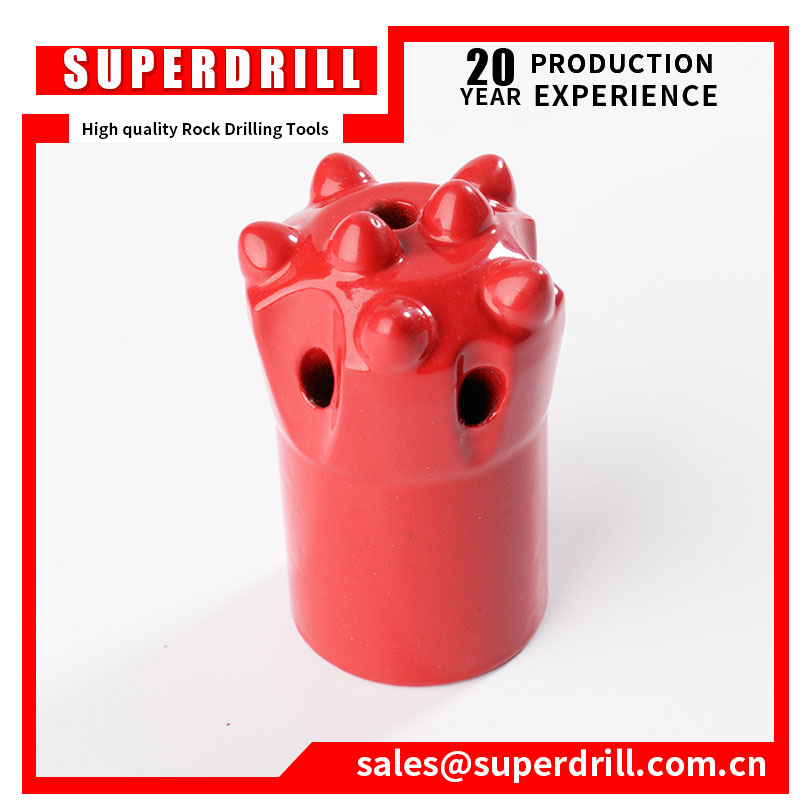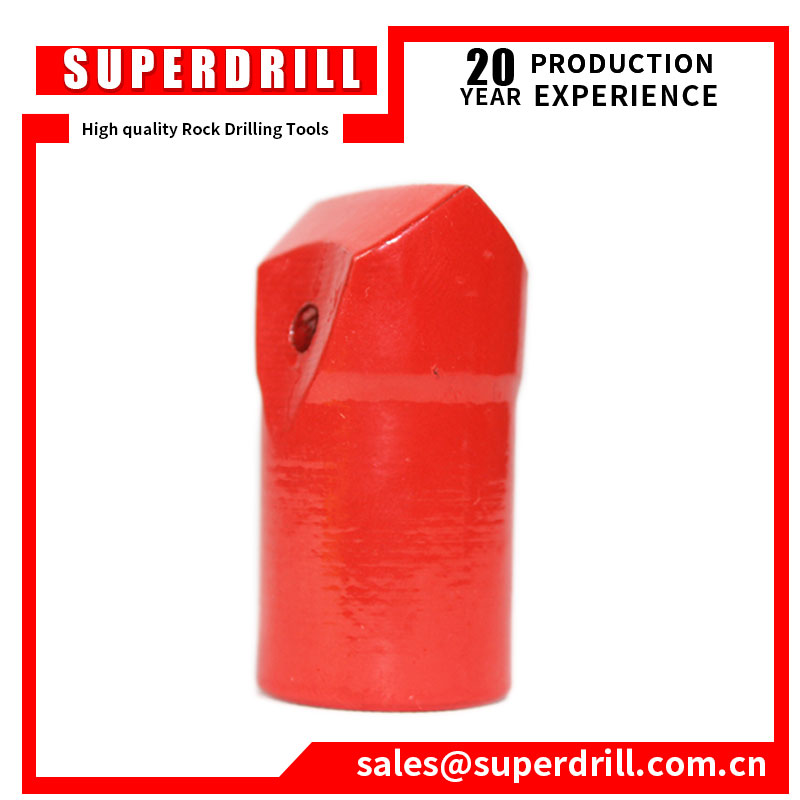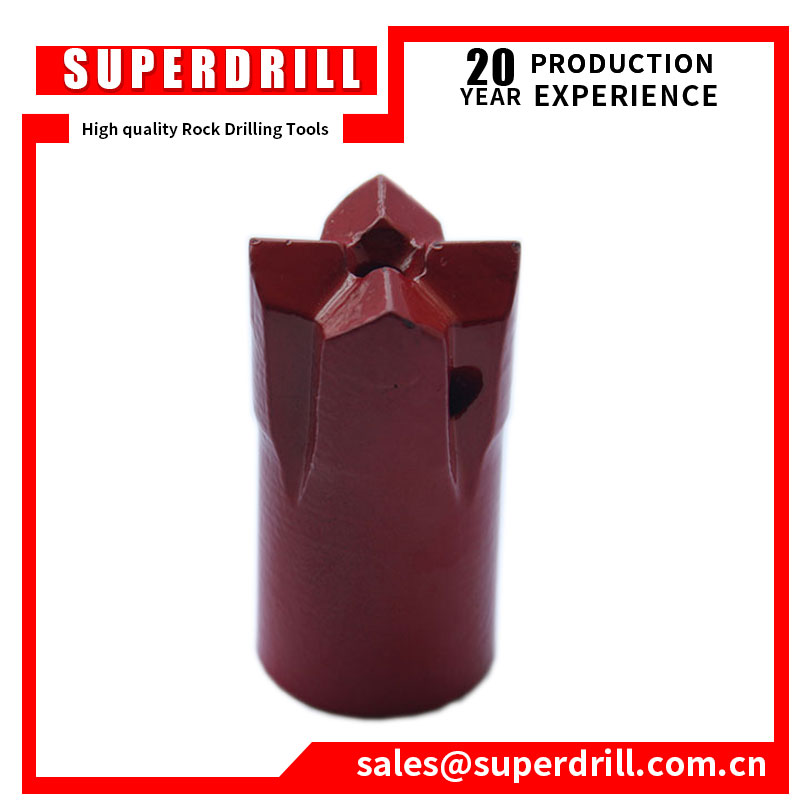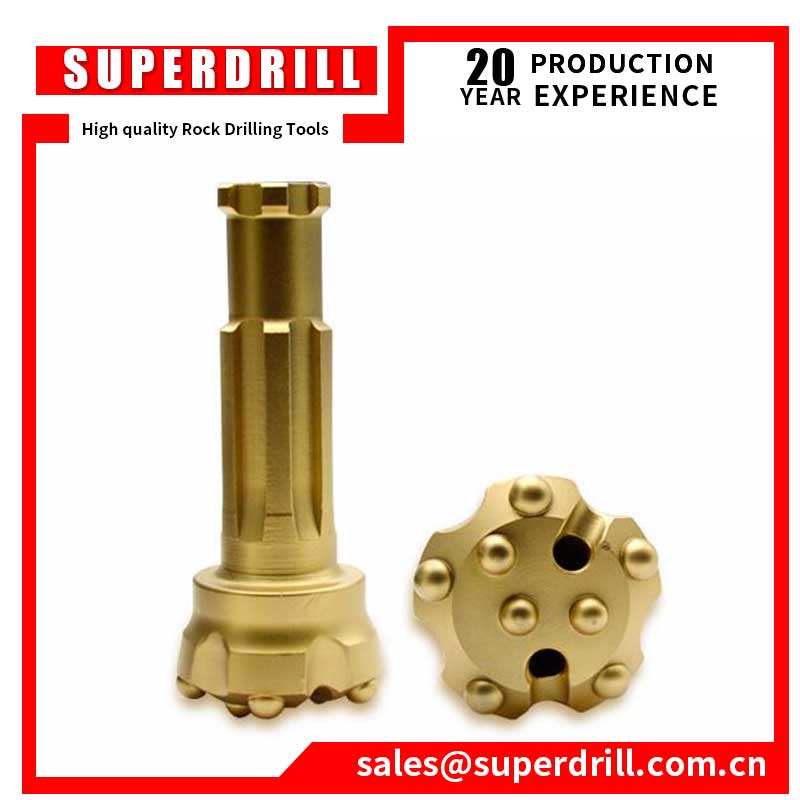In my line of work, pneumatic rock drill bits are indispensable tools. Whether I'm involved in mining, construction, or geological exploration, these tools allow me to efficiently penetrate and break through hard materials. Understanding the different types of pneumatic rock drill bits is crucial for enhancing my drilling performance. In this article, I will share insights into five distinct types of pneumatic rock drill bits, their features, applications, and how to select the right one for my needs.
1. button bits

Overview
I find that button bits are among the most popular types of pneumatic rock drill bits, especially for hard rock drilling. They feature spherical tungsten carbide buttons on their face, which provide excellent durability and penetration capabilities.
Features
- Material: Made from high-quality tungsten carbide, which enhances toughness and wear resistance.
- Design: The spherical shape of the buttons allows for optimal rock fragmentation and efficient drilling.
- Performance: Button bits offer superior penetration rates and longer service life compared to other bit types.
Applications
I typically use button bits in the following scenarios:
- Mining: Ideal for underground mining operations to extract minerals and ores.
- Quarrying: Effective for drilling in granite and other hard rock formations.
- Construction: Suitable for foundational work and heavy infrastructure projects.
Advantages
- High penetration rate and productivity.
- Reduced downtime due to longer bit life.
- Excellent performance in challenging geological conditions.
2. Chisel Bits

Overview
Chisel bits are another essential choice for me among pneumatic rock drill bits, designed primarily for softer rock formations. They feature a flat face with a chisel-like cutting edge, allowing for effective drilling without requiring aggressive cutting.
Features
- Shape: The flat cutting face makes it suitable for drilling in softer materials.
- Simplicity: Chisel bits have fewer components, which contributes to their reliability.
Applications
I find chisel bits very effective in:
- Construction: Used for drilling holes in concrete and softer rock.
- Roadwork: Ideal for creating trenches and holes in asphalt.
- Lightweight Mining: Effective for shallow drilling in less dense mineral deposits.
Advantages
- Cost-effective option for softer drilling applications.
- Easy to maintain and replace.
- Good performance in shallow drilling operations.
3. Cross Bits

Overview
Cross bits are designed with a cross-shaped cutting edge, making them versatile and suitable for a variety of rock types. They are known for their balanced performance, offering an excellent compromise between penetration speed and bit life.
Features
- Design: The cross shape allows for efficient rock fragmentation in different drilling orientations.
- Adaptability: Can be used in both soft and hard rock formations.
Applications
I commonly use cross bits in:
- Mining: Effective for various mineral extraction operations.
- Construction: Used in drilling foundations and anchors.
- Geological Exploration: Suitable for obtaining rock samples in diverse environments.
Advantages
- Versatile for multiple applications and geological conditions.
- Balanced performance, providing good penetration rates and durability.
- Can be used in both vertical and horizontal drilling operations.
4. DTH (Down-The-Hole) Bits

Overview
DTH Bits are specifically designed for use with a DTH hammer, making them ideal for deep hole drilling applications. These bits are particularly effective in hard rock conditions, providing high efficiency and productivity.
Features
- Connection: They connect directly to the hammer, allowing for powerful drilling action.
- Design: Typically features a tapered or flat face for effective rock penetration.
Applications
I primarily use DTH bits in:
- Mining: Ideal for deep drilling operations to reach mineral deposits.
- Water Well Drilling: Used in accessing groundwater resources.
- Tunneling: Effective for creating tunnels in tough geological formations.
Advantages
- High drilling efficiency and speed.
- Excellent performance in hard rock conditions.
- Reduced risk of jamming and downtime due to the hammer design.
5. Tapered Bits

Overview
Tapered bits are characterized by their conical shape, which allows for angled drilling applications. They are versatile and can be used in both soft and hard rock formations.
Features
- Tapered Design: The conical shape facilitates drilling at various angles, making them suitable for specific project requirements.
- Compatibility: Can be used with various drilling rigs and equipment.
Applications
I often use tapered bits in:
- Tunneling: Effective for creating angled tunnels and shafts.
- Quarrying: Suitable for drilling in complex geological formations.
- Construction: Used for anchoring and foundation work.
Advantages
- Versatility in drilling angles and orientations.
- Effective in both soft and hard rock applications.
- Compatibility with a wide range of drilling equipment.
Conclusion
Choosing the right pneumatic rock drill bit is crucial for optimizing drilling performance and ensuring project success. Each type of bit comes with unique features and applications that make it suitable for specific geological conditions and operational requirements.
When selecting a drill bit, I consider the following factors:
- Rock Type: Assess the hardness and density of the material I will be drilling.
- Drilling Depth: Determine the required depth and angle of drilling for the project.
- Operational Efficiency: Evaluate the required penetration rates and bit life based on my workload.
By understanding the five types of pneumatic rock drill bits—button bits, chisel bits, cross bits, DTH bits, and tapered bits—I can make informed decisions that enhance my productivity and efficiency in drilling operations. Whether I'm involved in mining, construction, or geological exploration, the right drill bit can make all the difference in achieving my project goals.
 Mobile:
Mobile: E-mail:
E-mail: